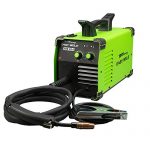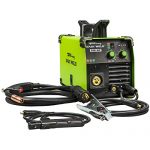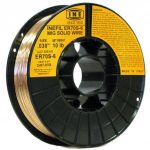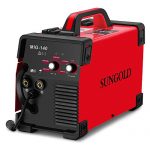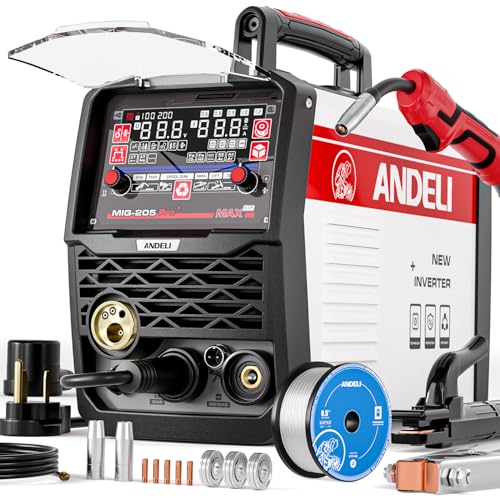The welding processes used today are of multiple types. Some of the most popular welding processes include but are not limited to torch arc, electric arc, gas weld, gas tungsten, and the other variety of arc welding. Several welding tools are being utilized for the process of welding. Most of these welding tools include a stationary holding tank that holds the material to be welded, which is an inert gas. It is also required to contain a pressurized container or a combustible container that contains the heated flame.
The welding procedure itself is just like a process in electricity manufacturing. It includes the use of electrodes that are electrically conductive materials that get heated and melt the molten material. When the electrode touches the metal, it gets reduced to a liquid, through the intermolecular force created between the metal and the electrode. The problem that the electrode created in the welding process creates is called burning. In many cases, the steel plate and the electrode can crack the metal especially if the welding is done wrong. It may damage the steel’s surface and cause the weld to fail.
The welding torch is the most commonly used tool for welding, but the welding torch also has its drawbacks. In general, welding torches are used in welding processes where the tube of the torch needs to be exposed to the atmosphere. The metal on the bottom of the tube needs to be cleaned first so that it will not create sparks when the tube touches the environment. The use of the welding torch is very limited in most cases because the strength of the flame it generates is also limited. If you plan to weld a very intricate object, you might need to use a higher power of the welding torch to make sure that you will have good results with the welding process.
Is MIG Welding For You?
If you are looking for a skilled craftsman, MIG welding can be the answer. MIG stands for Metals Inert Gas, which is a modern method of welding where heat is induced between two plates when they are pressed together, the gas is introduced and this will ignite, this then melts the metal. You can also buy the material to do the welding in your workshop, but it will be difficult to get it right the first time, and a skilled professional will know the basics, as well as the proper equipment for the job. When your heating system is producing a steady stream of gas the metal will melt.
MIG welding is a very new field, it’s only been around for a few years, which means that there are lots of companies who are only just getting their helmets on. The one area where the industry is beginning to make progress is with the control panels. There are two types of panel controls, the types used on the big projects are an interlocking type, and the non-interlocking type. As with all things you are always better off trying to get a second opinion from someone who knows a bit more about it than you. The type of panel that you need is going to depend on what type of machine you are using. Metal fabrication centers are not likely to have the type of panel control you would use for the building of a house, so you may want to look at some of the local hardware stores, or if you are confident you can do the job yourself.
Once you have welded a metal structure together, you will want to make sure that all parts are completely protected. It will be a good idea to check out the source of the metal before you start welding, and if it is anything acidic, then make sure that you get a ventilation system in place. A lot of people make the mistake of putting the metal too close to the heat source, which could damage the weld. Using a high-temperature protective sheet is an excellent idea.
TIG Welding
TIG welding is a very popular and accepted method of welding. It has long been used as an alternative to traditional brazing (burning) methods. This is because of its energy efficiency and performance. It is the only method that can make use of a second electrode for welding together two different metals. The advantages of this technique are many, not least of which is the fact that it is much more energy-efficient than the method of traditional brazing. But with this increase in efficiency come higher operating costs, making TIG welding even more expensive for those who don’t have the budget to invest in this particular welding method.
But with more demand comes an increase in quality welds. As more companies turn to TIG welding to save on money, there are now many more manufacturers producing high-quality equipment. This means that the cost of these products is going up. This means that more people are turning to other methods of welding to save money and be able to achieve the highest quality welds possible.
If you’re looking for something that offers superior weld quality at a lower cost, then this is a method that you should consider. It’s always a good idea to purchase the best welding equipment that you can afford, because if you do not, then you are risking compromising the safety of your job site. Quality is what will ensure the safety of your employees and your job site. So if you can afford to spend a little bit more, then you should go for the best equipment you can.
What is the Difference Between the Two Types of Fused Flux?
You must understand the two types of flux core welding to ensure that you are not working with the wrong type of flux when you have a flux core machine. Some of the different types of flux that are commonly used in both of these types of welding include HEX flux, or nickel-iron, and Zinc-cobalt. Most of the time, you will hear the terms HEX and ZINC fused flux used in the same fashion. There are also some other common terms used within these types of welding that you may want to learn about as well. This is an area where you can put some research into so that you can better understand the different types of flux that are typically used for welding.
The most important term that you need to learn and master when it comes to flux welding is the word “Fused.” Many people will get a little confused between the two types of flux that are common within the welding community. In a nutshell, there are two main types of flux cores: the one that is made from nickel-iron and the one that is made from zinc-cobalt. The difference between the two types of flux that are typically used for welding has more to do with the amount of fusion in the core as well as the strength of the core. When you have a zinc-cobalt core that is fused to a zinc-cobalt tip, it will typically be much stronger than a nickel-iron core when it comes to strength and capability. When you are looking to have a stronger core when you are working with a flux core welding machine, you will want to make sure that you are getting a zinc-cobalt core.
Knowing the difference between the two types of flux is very important if you want to use the right flux for the task that you are going to be doing with the machine. If you are trying to find out more about the types of flux that are commonly used for welding, then you should check out the online workbook that will help you to easily learn the correct terms that you will need to understand when it comes to flux welding. No matter what type of flux you are looking for, you should be able to find a good website online that will be able to help you find the right equipment for your welding needs. In the end, you should be able to use the proper flux when you are doing the work that you need to do with the core that you are working with.

